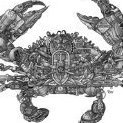Has Anyone Installed A Diesel Performance Chip In Their Mu-7 3.0 Ddi Vgs Models
-
Recently Browsing 0 members
- No registered users viewing this page.
-
Topics
-
-
Popular Contributors
-
-
Latest posts...
-
1
Federal judge blocks Trump's anti-transgender passport policy
I agree with Trump on this. The passport needs to match your real sex. -
1
Federal judge blocks Trump's anti-transgender passport policy
BOSTON − A federal judge on June 17 blocked the Trump administration from refusing to issue passports to transgender and nonbinary Americans nationwide that reflect their gender identities, after finding it was likely unconstitutional. U.S. District Judge Julia Kobick in Boston issued a preliminary injunction that expanded an earlier order she issued in April that had stopped the U.S. State Department from enforcing the policy in the case of just six people. Trump issued an executive order immediately upon taking office that the federal government must "recognize only two sexes, male and female," and that "these sexes are not changeable." The Department of State then stopped issuing passports in anything but the applicant's biological sex. The rule caused mass confusion. Trans applicants who had already submitted their passport application, for example, were out of luck. Trans travelers were stopped and accused of using fake passports. (more) USA TODAY https://www.msn.com/en-us/news/us/judge-blocks-trump-anti-trans-passport-policy/ar-AA1GUwnI -
41
Why do most people NOT smoke weed even though it's legal?
I don't smoke. Also don't feel a need for an external way to get high .... a 5km+ run gives me a pleasant, uplifting buzz for about 2 hours post run, sex has a similar effect (if I don't fall asleep afterwards 😀). Regarding alcohol, I've long passed that phase .... it takes a lot of effort at my age to feel healthy, so I don't want to waste a day feeling rough for one night of drinking. And my friends and the Missus appreciate the drive home by a sober person after a group night out. -
6
Reuters Exclusive: US moving fighter jets to Middle East as Israel-Iran war rages
So what do you want? A war just so you can make a thread about Trump? Sad sad troll, get over to ukraine, see how you like war up close and personal. -
3
They walk among us
I don't really want to know what you do in the shower. Like I said. You are one sick freak. -
-
-
Popular in The Pub



.thumb.jpg.3ee24d9400fb02605ea21bc13b1bf901.jpg)

.thumb.jpeg.d2d19a66404642fd9ff62d6262fd153e.jpeg)






.thumb.jpg.bc523c85a8d558dbc282dca7a2e602c9.jpg)
Recommended Posts
Create an account or sign in to comment
You need to be a member in order to leave a comment
Create an account
Sign up for a new account in our community. It's easy!
Register a new accountSign in
Already have an account? Sign in here.
Sign In Now